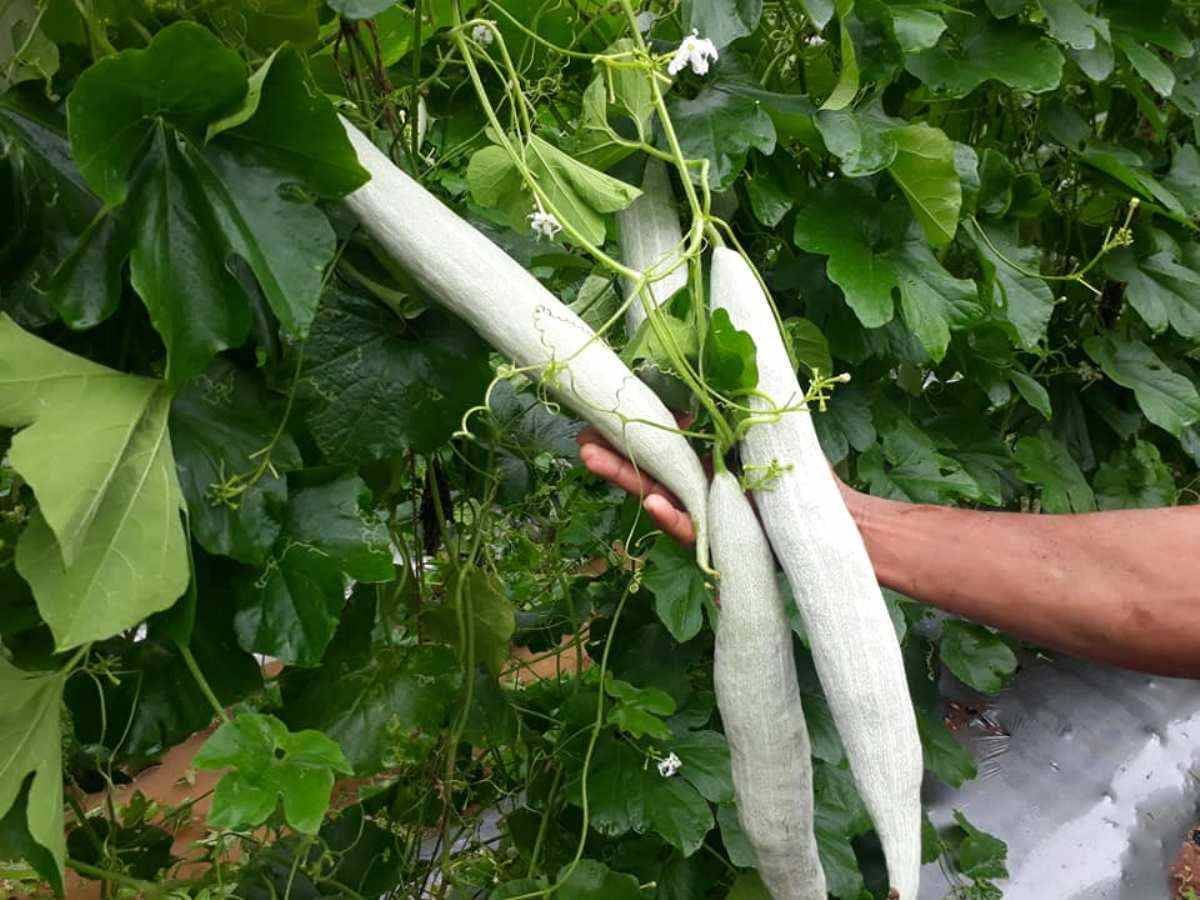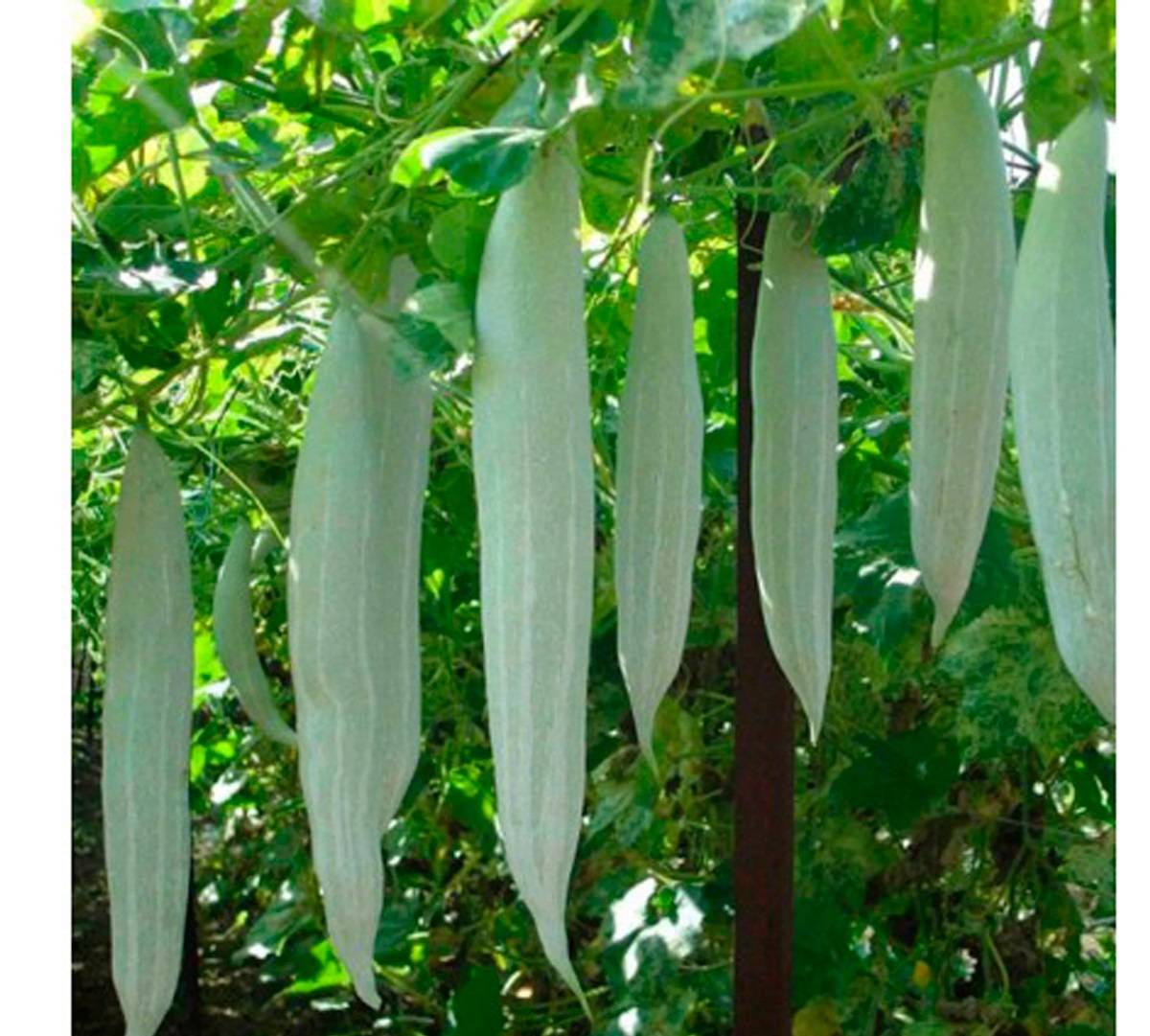
The snake gourd (Trichosanthes cucumerina) is a creeping plant belonging to the Cucurbitaceae family. It produces elongated, twisted fruits that are often eaten as vegetables. The species is endemic to large portions of India, Australia and Africa.
Most people assume that the snake gourd originated in India. It was once wild but eventually domesticated. India and other parts of South East Asia, Australia, West Africa, Latin America and the Caribbean are still home to the wild species.
Snake Gourd Crop Production Requirements
Temperature and Soil
It thrives in tropical climates and yields greenish-white and whitish-colored fruits that grow to be 100–150 cm long and 60–75 cm wide (approx.). The best temperature for growing snake gourds is between 18 and 21 degrees Celsius during their development stage and between 24 and 27 degrees Celsius thereafter. Farming snake gourds are not ideal for climates with extremes.
Even though snake gourds thrive on any suitable soil, sandy loam soils are where they produce the most fruit. The soil's pH level should not be excessive and should be kept between 6.5 and 7.5. The field has to be aerated and well-drained.
Land Preparation:
The secret to maximizing yield while growing snake gourds is effective ground preparation. Make sure the field is thoroughly tilled by using the appropriate machinery and tools for harrowing and plowing. This encourages the necessary aeration that the snake gourd needs. Create trenches with dimensions of 30–40 cm in depth and 50–60 cm in circumference, spaced 2.5–2.5 M apart, and then think about enriching the topsoil of the pit.
Snake Gourd Varieties:
CO-1, CO- 2, KM 1, PLR 1, PLR 2, Kamudi, MDU-1, TA-19 and Baby
Sowing Time:
Snake gourds are sown in both the rainy and spring-summer seasons in south India. The rainy season crop is seeded in June–July, while the spring-summer crop is sown in December–January.
Rate of sowing and seed treatment:
On an average, 4-6 kilogram of seeds is sufficient to cover one hectare of land, while seeding in pits with a 2.0–2.5 m spacing only takes roughly 1.5 kg of seeds per hectare. Larger fruit seeds result in heavier seedlings and robust plants. Trichoderma viride @ 4 g or Pseudomonas fluoresces 10g should be used to treat the seed before planting in the field.
Fertilizing:
Before the final ploughing, the topsoil should be mixed with 130 kg of FYM (Farm Yard Manure), 250 kg of neem cake, 5 kg of Azospirillum, 5 kg of Phosphobacteria, and 6-7 kg of Pseudomonas per acre to increase production and protect your plants. N, P, and K should be applied at 180/240/250 kg each throughout the cropping season. An ideal parameter would be to apply 50%, or 90 kg, of the nitrogen (N), at the very beginning, and to use the remaining nitrogen during the growing time.
Water Management:
Snake gourd farming is dependent on effective irrigation. Watering land alternate days or every two to three days, depending on the climate, is a healthy habit. It can be necessary to regularly irrigate plants throughout the summer. To assist plants without running the danger of either overwatering or underwatering, furrow irrigation is a very reliable method.

Stalking and Trellising:
Snake gourd seedlings have many lateral stems and develop quickly as trailing plants. They must thus provide support using staking and trellising to increase productivity, enlarge fruit size, facilitate harvesting, and lower the danger of rotting.
Growers can use PVC tubing, bamboo poles, and other strong materials for proper trellising. The typical configuration for trellises is a tunnel or shed construction. Horizontal stakes are also an excellent method to support vines with sideways stems that climb quickly, like snake gourds.
How To Manage Pests and Diseases?
leaf caterpillars and beetles: The vibrant leaves and developing stalks are destroyed by leaf caterpillars and beetles. Use Dichlorvos spray 76% (EC) - 6.5 ml per 10 liters of water or Trichlorfon spray 50% (EC) - 1.0 ml per liter when applying.
Fruit Fly: Use 20 x 15 cm poly bags of fish meal traps available with 5 g of fish meal in addition to 1 ml of Dichlorvos per hectare via cotton to catch fruit flies that harm fruits. Cotton can be removed after 7 days; however, the fish meal tapper must be removed after 20 days. Neem oil at a concentration of 3.0% can be used as a foliar spray. Remove the contaminated fruits from the tree right away.
Powdery Mildew: Spraying Carbendazim 0.5 g/lit or Dinocap 1 ml/lit effectively controls this.
Downy Mildew: Twice mist Mancozeb/Chlorothalonil, 2 g each. Maintain a 10-day break between uses.
Harvesting:
In general, snake gourds require close to 130–150 days to reach the point of harvest. Make sure to gather the fruits as soon as they reach the right size and before they get ripe because you shouldn't be harvesting them immaturely or consistently. The expected average production is 15–18 tons per hectare, however, this is highly dependent on the crop's variety and an efficient cropping strategy.












